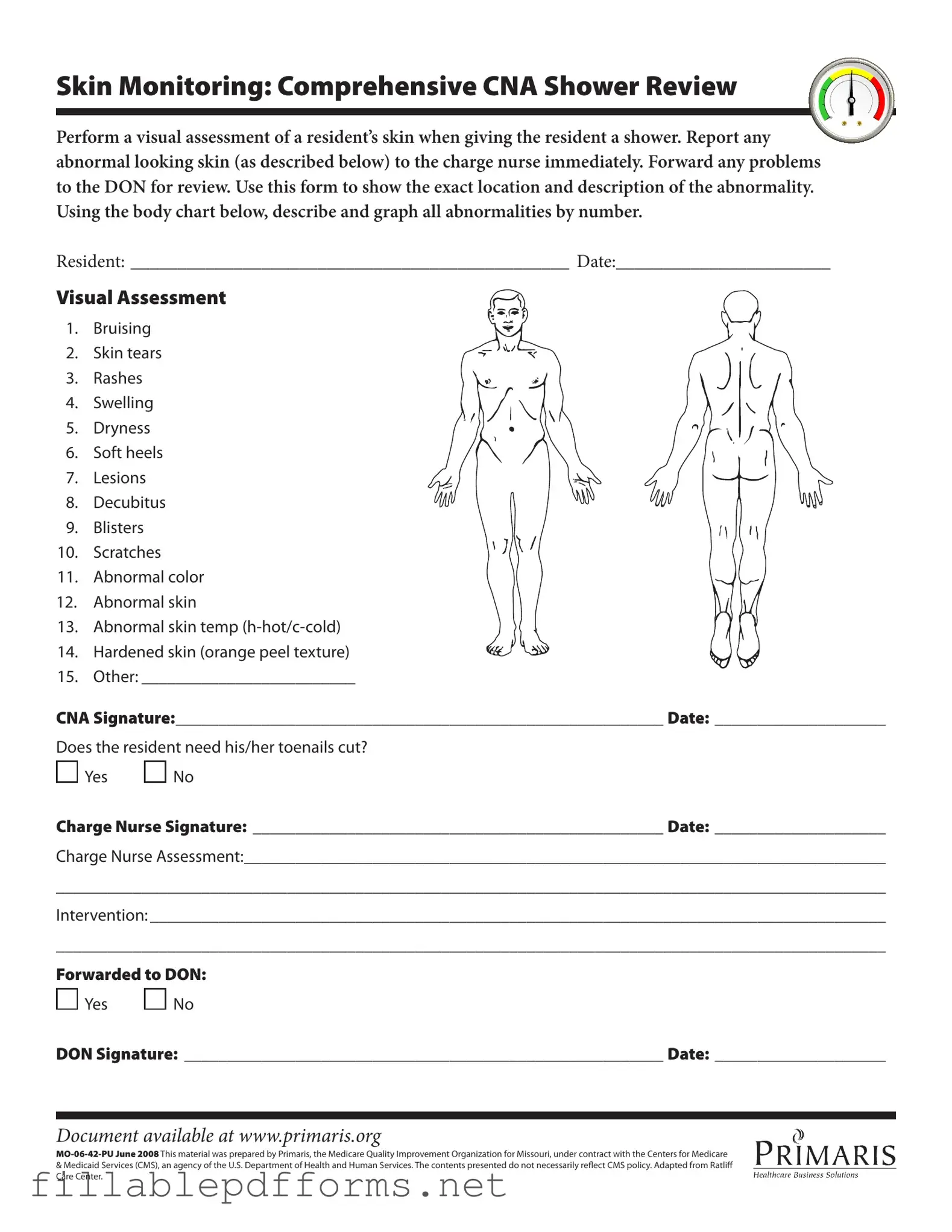The CNA Shower Sheets form serves as a vital tool in ensuring the well-being of residents during their bathing routine. This form is designed to facilitate a thorough visual assessment of a resident’s skin while providing a shower, highlighting the importance of monitoring for any abnormalities that may arise. Caregivers, specifically Certified Nursing Assistants (CNAs), are tasked with documenting various skin conditions, such as bruising, skin tears, rashes, and other irregularities. Each abnormality must be noted with precision, including its exact location on the body, which is illustrated on an accompanying body chart. Additionally, the form prompts CNAs to assess the overall condition of the resident's skin, checking for signs of dryness, swelling, or lesions, among other concerns. Should any issues be identified, it is crucial for CNAs to report these findings to the charge nurse immediately, ensuring that appropriate interventions are initiated. The form also includes a section for the charge nurse’s assessment and any necessary follow-up actions, including forwarding the information to the Director of Nursing (DON) for further review. Ultimately, the CNA Shower Sheets form not only aids in maintaining high standards of care but also promotes effective communication among healthcare team members, enhancing the overall health and comfort of residents.
